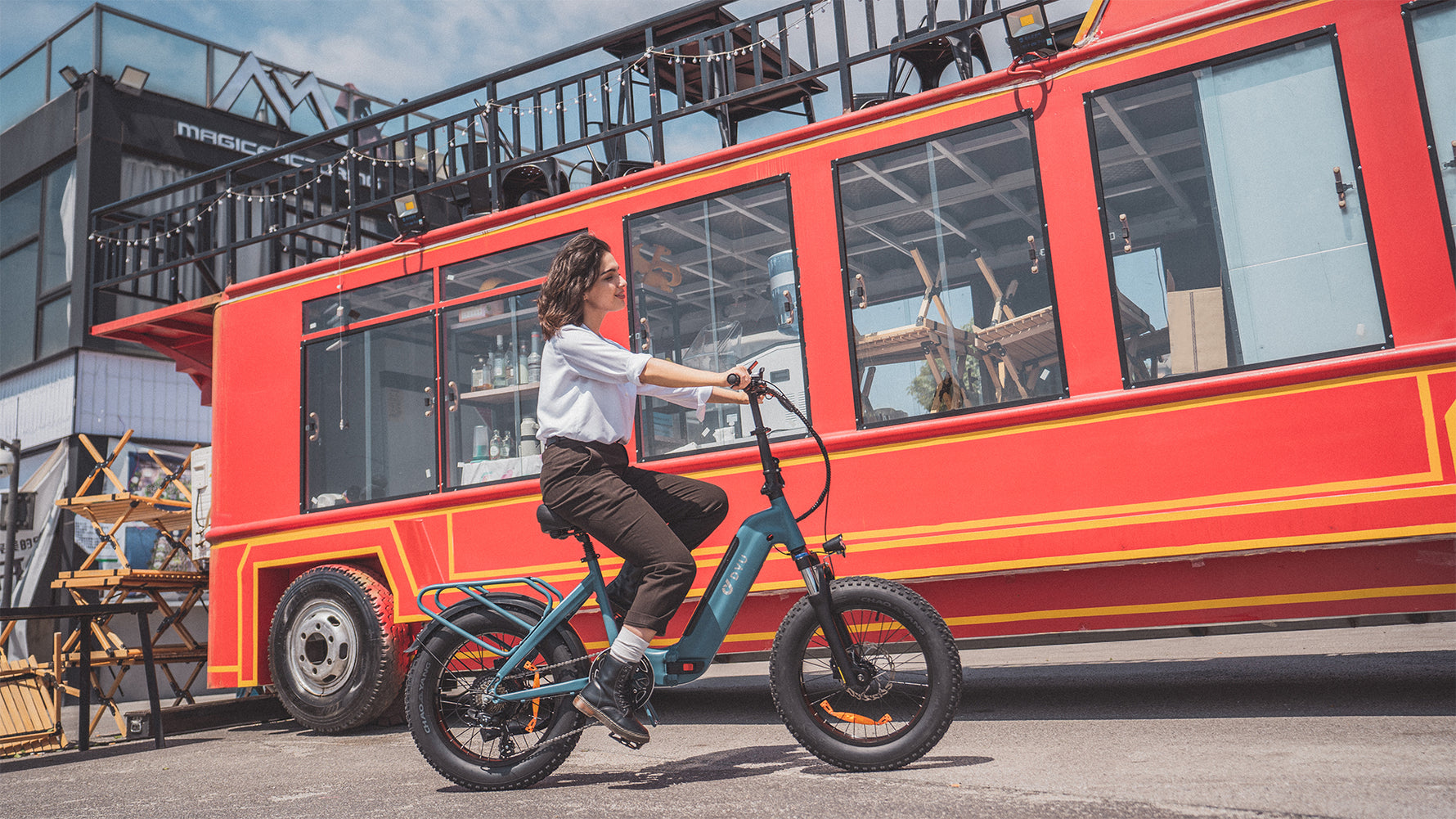The Ultimate Guide to Electric Fat Bikes
What are Electric Fat Bikes?
Electric fat bikes, also known as e-fat bikes, are a type of electric bicycle with oversized tires that are usually 4-5 inches wide. Compared to standard bike tires that are around 1 inch wide, the extra-wide tires of electric fat bikes provide more traction, stability, and shock absorption.
Just like regular fat bikes, electric fat bikes can smoothly roll over obstacles and soft terrain like sand or snow that would stop other bikes. The added power of an electric motor makes it even easier to traverse challenging surfaces.
Benefits of Electric Fat Bikes
Here are some of the advantages of electric fat bikes:
- Increased traction and stability from the wide tires
- Can ride over loose soil, mud, or snow that would get other bikes stuck
- Cushioning effect smooths out bumps and vibrations
- Electric assist makes riding in soft conditions much easier
- Great for off-road exploration and adventure
- Tuned geometry for stable handling on all surfaces
Types of Electric Fat Bikes
There are two main classifications of electric fat bikes:
Hub Drive Electric Fat Bikes
Hub drive e-fat bikes have the electric motor built into the hub at the center of the front or rear wheel. This is the simplest motor configuration but slightly less efficient than mid-drive systems.
Mid-Drive Electric Fat Bikes
Mid-drive electric fat bikes have the motor mounted in the middle of the bike frame. This central position allows the motor to leverage the bike's gears for better efficiency and power delivery.
Key Features of Electric Fat Bikes
Some key features to look for when selecting an electric fat bike include:
- Motor power - More torque aids with challenging terrain but drains the battery faster.
- Battery capacity - Larger batteries provide extended range.
- Tire size - Standard is 4 inches wide. Wider tires have more flotation.
- Suspension - Front suspension helps absorb bumps and maintain control.
- Gearing - Wide gear ranges allow optimizing pedaling cadence.
- Brakes - Hydraulic disc brakes offer the best all-weather stopping.
Introducing the DYU FF500 Electric Fat Bike
A great example of an electric fat bike designed for rugged performance is the DYU FF500. Key features include:
- 500W motor provides 20 mph top assisted speed
- 48V 14Ah battery for up to 43 miles range
- 20" x 4" fat tires absorb bumps and increase control
- Front suspension smooths out rough terrain
- Shimano 7-speed gears customize pedaling effort
- Hydraulic disc brakes for superior stopping power
- Load capacity of 330 lbs
With fat tires, front suspension, and sturdy construction, the FF500 can traverse bumpy dirt trails and uneven ground with ease. The 500W motor provides ample power without being overkill.
Riding Electric Fat Bikes in Winter
Electric fat bikes really shine in snowy winter conditions. The wide tires float atop snow instead of sinking in, and the electric assist overcomes the increased rolling resistance.
To prepare an e-fat bike for winter riding:
- Install aggressive tread tires for maximum traction
- Use lightweight plastic fenders to keep snow spray off the bike
- Add extra layers and gloves to stay warm
- Carry tools and supplies in case you get stranded
- Lower the tire pressure slightly for more flotation on snow
With proper preparation, electric fat bikes make winter riding fun instead of a chore. They open up snowy terrain that would stop other bikes in their tracks.
The Future of Electric Fat Bikes
As electric bike technology continues improving, expect to see lighter and more powerful e-fat bikes gaining popularity. Frame materials like carbon fiber and titanium will help reduce weight.
Electric fat bikes combine flotation and traction from the oversized tires with electric power to ride more places. Their off-road exploration abilities will only increase over time.
Fat tires amplify the advantages of electric assist. If exploring remote areas and backcountry trails appeals to you, try out an electric fat bike!
About the Author
Mike Roberts enjoys testing and reviewing electric bikes in all conditions. He has been mountain biking for over 10 years and is excited by the capabilities of modern e-bikes.
References
- E-Bike Upkeep 101: Preserving Your Bicycle's Peak Condition
- E-Bike Safety Courses: Skill Development for Safer Riding
- E-Bike Touring Tips for Long-Distance Adventures
- E-Bike Infrastructure: Paving the Way for a Greener Future
- E-Bike Conversion Kits: Elevating Your Cycling Experience
- E-Bike vs. Scooter: A Comparative Analysis for Urban Transit
- Safety Recommendations for E-Bike Enthusiasts
- E-Bike Batteries and Range Anxiety: Myths and Realities

Comments
Post a Comment